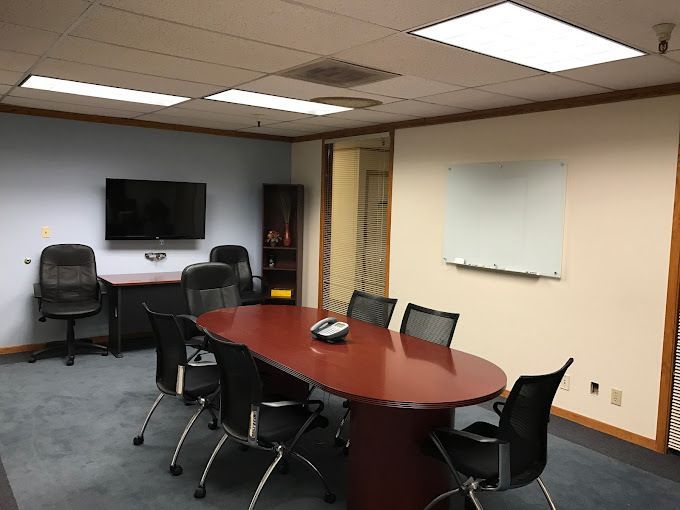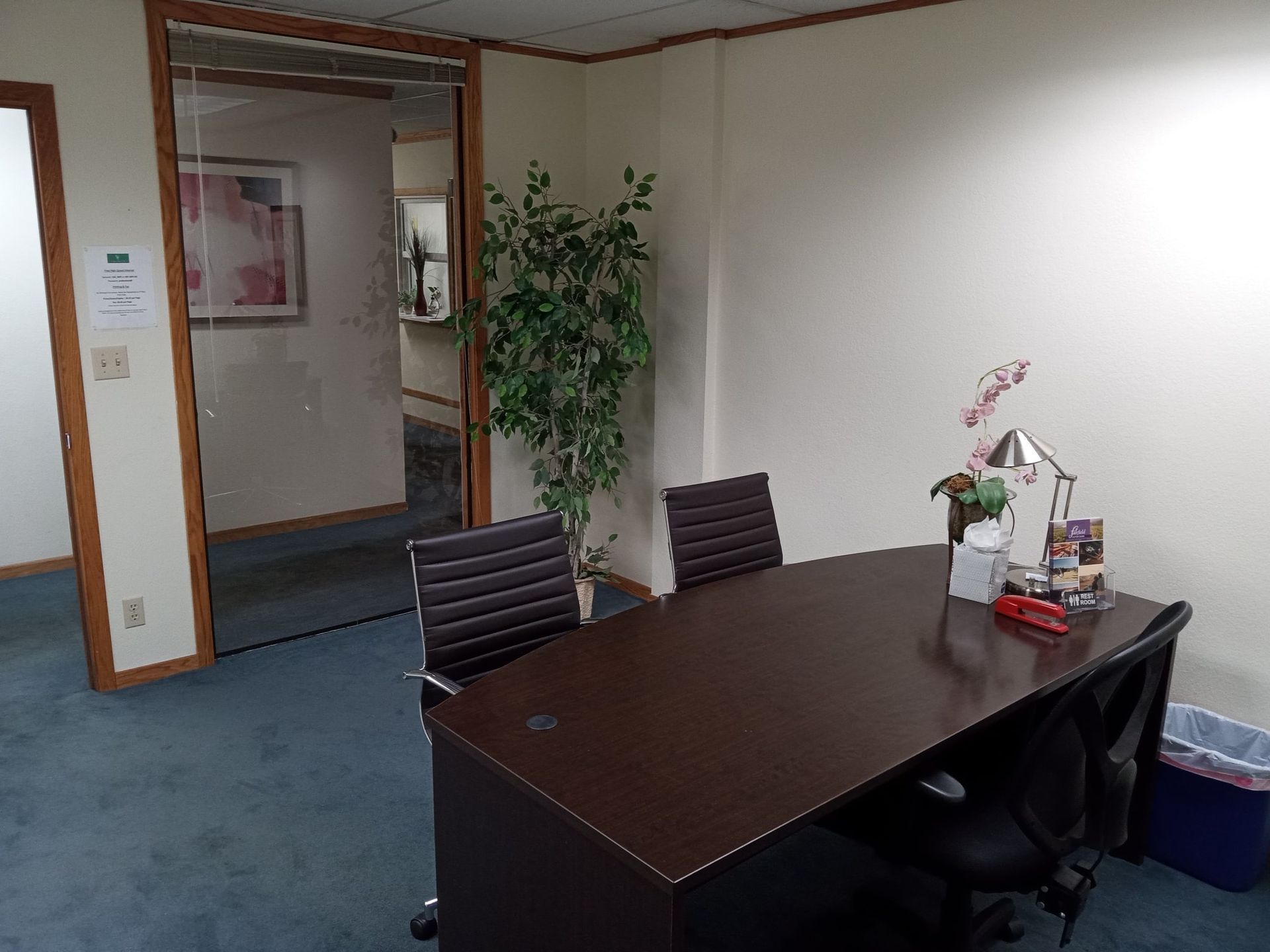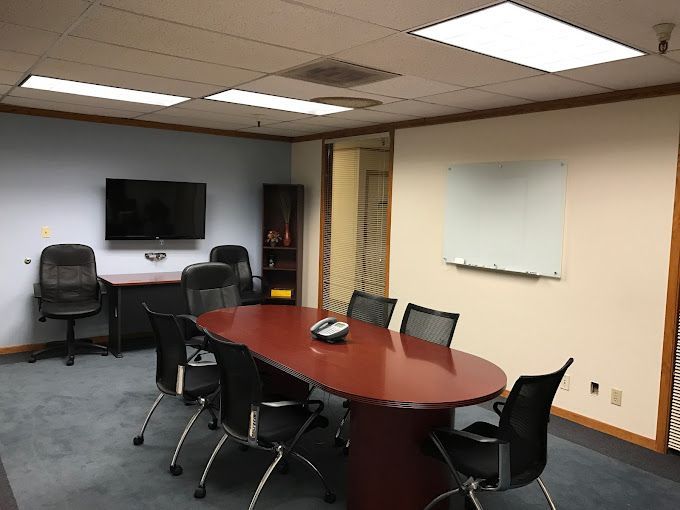New Paragraph
Virtual Work spaces : Revolutionizing the Future of Work

The way we work has undergone a massive transformation in recent years. With the advent of technology and the increasing need for flexibility, the concept of virtual Work spaces has emerged as a game-changer. Virtual Work spaces enable organizations to create an efficient, collaborative, and cost-effective environment for their teams, regardless of their geographical locations. In this blog, we'll dive into the benefits, challenges, and best practices associated with virtual Work spaces.
What is a Virtual Workspace?
A virtual workspace is an online environment where employees can collaborate, communicate, and work together, regardless of their physical location. It's essentially a digital office where teams can interact in real time. This workspace can include cloud-based tools, project management software, communication platforms, and other digital resources designed to mimic the traditional office environment.
Unlike physical offices, virtual Work spaces are flexible and accessible, allowing employees to work from anywhere, whether at home, a co-working space, or while traveling. This level of flexibility is one of the key reasons why virtual Work spaces have gained immense popularity in recent years.
The Rise of Virtual Work spaces
The need for virtual Work spaces accelerated during the global COVID-19 pandemic. Businesses around the world had to adapt quickly, shifting their operations to remote work. While the pandemic served as a catalyst for many organizations to adopt virtual Work spaces, the trend continues to grow as more companies recognize the long-term benefits of this approach.
Today, organizations across various industries are leveraging virtual Work spaces to enhance productivity, foster collaboration, and provide employees with greater flexibility in managing their work-life balance.
Key Benefits of Virtual Work spaces
1. Flexibility and Remote Work Opportunities
One of the primary benefits of virtual Work spaces is the flexibility they offer. Employees are no longer bound by the constraints of a physical office. They can work from anywhere with an internet connection. This flexibility enables employees to better manage their time and achieve a more balanced work-life approach.
2. Cost-Effectiveness
Maintaining a physical office can be expensive, with costs associated with rent, utilities, equipment, and maintenance. Virtual Work spaces eliminate these costs, allowing companies to allocate resources elsewhere, such as investing in technology and employee development. For employees, there are savings on commuting expenses, lunch costs, and work attire.
3. Increased Collaboration and Communication
Virtual Work spaces foster real-time communication and collaboration. Tools like Slack, Microsoft Teams, and Zoom enable team members to communicate instantly, share files, and collaborate on projects without delay. Many of these tools also provide integration with other software, streamlining workflows and reducing friction between departments.
4. Access to a Global Talent Pool
With virtual Work spaces, organizations are no longer limited to hiring employees in their immediate geographical area. Companies can tap into a global talent pool, hiring individuals with the specific skills they need, regardless of location. This can lead to better diversity, innovation, and the ability to find top-tier talent.
5. Improved Productivity
Studies have shown that remote workers often experience higher productivity levels. Without the distractions of an office environment and the stress of commuting, employees can focus more on their tasks. Furthermore, virtual Work spaces enable customized work environments that cater to individual preferences, thereby enhancing productivity.
Challenges of Virtual Work spaces
While virtual Work spaces offer numerous benefits, they also come with their own set of challenges. Organizations need to address these challenges to ensure the success of their virtual Work spaces.
1. Communication Barriers
While virtual Work spaces offer several tools for communication, remote work can still lead to misunderstandings or a lack of clarity. The absence of face-to-face interactions can sometimes make it difficult to read body language or gauge tone. Teams need to establish clear communication protocols and ensure that everyone is on the same page.
2. Technology and Security Issues
Virtual Work spaces rely heavily on technology, which can sometimes be prone to glitches or failures. Poor internet connectivity or technical difficulties can disrupt work, causing delays. Moreover, ensuring data security in virtual environments is crucial. Organizations must implement strong security protocols to protect sensitive information from cyber threats.
3. Isolation and Loneliness
Remote work, while flexible, can sometimes lead to feelings of isolation and loneliness. Employees miss out on in-person interactions with colleagues, which can lead to a disconnect from the team and company culture. Companies must find ways to foster social connections and team bonding in virtual settings to maintain employee morale and engagement.
4. Work-Life Balance
While virtual Work spaces offer flexibility, they can also blur the lines between personal and professional life. With no clear boundaries between home and work, employees may find themselves working longer hours, which can lead to burnout. Employees need to establish a structured routine and take regular breaks to maintain a healthy work-life balance.
Best Practices for Successful Virtual Work spaces
To overcome the challenges and maximize the benefits of virtual Work spaces, companies should adopt best practices that foster productivity, collaboration, and employee well-being.
1. Set Clear Expectations
Establishing clear expectations for communication, work hours, and deadlines is crucial. Employees should be aware of their availability requirements, the frequency of check-ins, and the methods for communicating progress. Having clear guidelines ensures that everyone is aligned and reduces confusion.
2. Utilize the Right Tools
Selecting the right virtual collaboration tools is key to ensuring a smooth workflow. Project management software, such as Asana or Trello, helps teams track tasks and deadlines, while communication platforms like Zoom or Slack facilitate real-time collaboration. It’s essential to select tools that integrate seamlessly with one another and are user-friendly.
3. Foster Social Connections
It's essential to create opportunities for employees to interact socially, even in a virtual setting. Virtual happy hours, online team-building activities, and non-work-related video conferences can foster camaraderie among remote workers. Encouraging informal interactions helps recreate the social atmosphere of a physical office.
4. Prioritize Security
Since virtual Work spaces involve handling sensitive data, ensuring cybersecurity is a top priority. Organizations should implement strong password policies, use encryption tools, and provide employees with training on best practices for maintaining Security. Using VPNs and multi-factor authentication (MFA) can also help safeguard data.
5. Provide Support for Employee Well-Being
Working remotely can sometimes lead to burnout or stress. To mitigate this, companies should prioritize employee well-being by offering mental health resources, encouraging breaks, and promoting a healthy work-life balance. Managers should regularly check in with their teams to ensure employees are coping well with the remote work environment.
6. Create a Culture of Accountability
In a virtual workspace, accountability is crucial. Employees should be responsible for their tasks, and managers should monitor progress without micromanaging. Setting measurable goals and providing regular feedback helps keep the team on track while fostering a sense of ownership and trust.
The Future of Virtual Work spaces
As technology continues to advance, the future of virtual Work spaces looks even brighter. Virtual reality (VR) and augmented reality (AR) are expected to play a significant role in the evolution of remote collaboration. These technologies can offer immersive experiences, making virtual meetings and collaboration feel more interactive and engaging.
Furthermore, the rise of artificial intelligence (AI) will help automate routine tasks and improve decision-making, making virtual Work spaces more efficient. With enhanced connectivity and Security, the virtual workspace of the future will likely be even more seamless, flexible, and integrated into everyday business operations.
Conclusion on Virtual Work spaces
Virtual Work spaces have fundamentally changed how we work, offering unparalleled flexibility, collaboration, and cost-saving opportunities. However, they also come with challenges that require careful planning and consideration. By implementing best practices, embracing the right technology, and fostering a positive work culture, organizations can harness the full potential of virtual Work spaces.
As remote work becomes more mainstream, companies that adapt and embrace virtual Work spaces will be better positioned to thrive in the future. Ultimately, virtual office spaces are more than just a trend; they represent the future of work, one where flexibility and efficiency go hand in hand.
Common Questions About Virtual Work spaces
1. What is a virtual workspace?
A virtual workspace is a digital environment that allows employees to collaborate, communicate, and work together online. It includes tools such as project management software, video conferencing, and cloud storage to simulate a physical office environment.
2. How do virtual Work spaces improve productivity?
Virtual Work spaces reduce commuting time and workplace distractions. They offer flexible working hours and access to collaboration tools, which enable employees to focus and complete tasks efficiently.
3. What are the key tools used in virtual Work spaces?
Standard tools include communication platforms (such as Slack and Microsoft Teams), video conferencing apps (like Zoom and Google Meet), project management software (like Trello and Asana), and cloud storage services (like Google Drive and Dropbox).
4. Are virtual Work spaces cost-effective for companies?
Yes. Businesses save on rent, utilities, and office maintenance. Employees also reduce commuting and food expenses, making virtual Work spaces cost-effective for both employers and employees.
5. How can companies ensure Security in virtual Work spaces?
Organizations should use VPNs, multi-factor authentication, and strong password policies. Regular cybersecurity training and the use of encrypted file-sharing systems are also essential for protecting sensitive data.
6. Can virtual Work spaces help with global hiring?
Absolutely. Virtual Work spaces allow companies to hire talent from anywhere in the world. This expands access to skilled professionals and supports diversity and innovation.
7. How do virtual Work spaces maintain team collaboration?
Teams can use real-time chat, video meetings, and shared project boards to stay connected. Virtual team-building activities and regular check-ins also help strengthen team bonds.
8. What challenges do virtual Work spaces face?
Challenges include communication barriers, feelings of isolation, and the risk of blurred work-life boundaries. Technical issues and cybersecurity threats can also arise without proper planning.
9. How can employees balance work and personal life in a virtual workspace?
Setting clear working hours, taking regular breaks, and creating a dedicated workspace at home are key. Using scheduling tools also helps maintain a healthy work-life balance.
10. What is the future of virtual Work spaces?
The future will see the advancement of technologies such as virtual reality (VR), augmented reality (AR), and AI-powered tools. These innovations will create more immersive and efficient remote work environments.










